Solar Flares Break Records In Largest Display Seen For Years
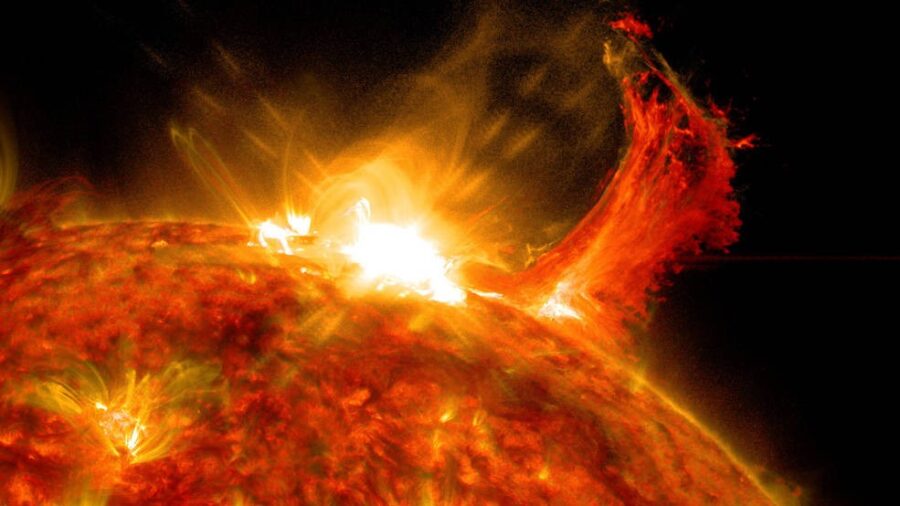
In the past 24 hours, several record-breaking X-class flares have erupted from the Sun’s surface. Solar flares are measured based on their strength and classified into different categories.
The classification system includes B, C, M, and X classes, with X-class flares being the most powerful. Each letter class represents a 10-times increase in energy output, similar to the Richter scale for earthquakes.
Reaching Solar Flare Peak
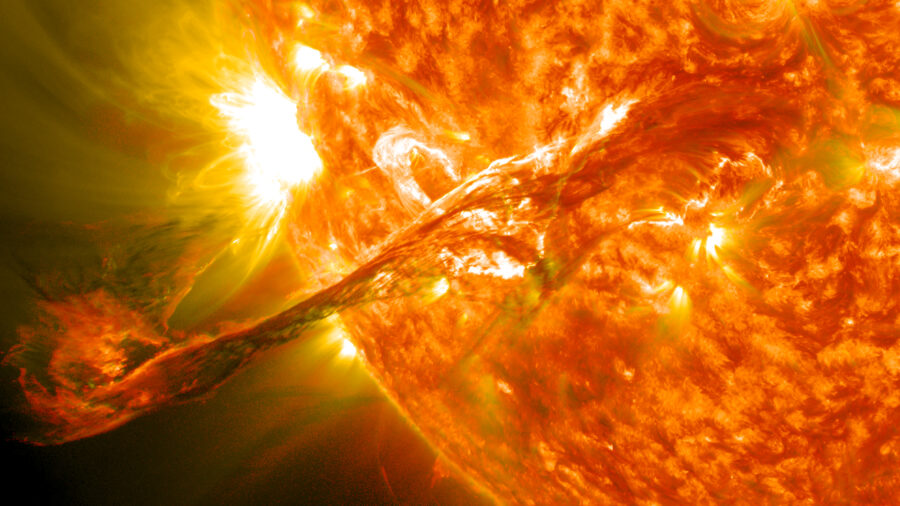
The three most recent solar flares were an X1.8, which reached its peak at 6:07 pm EST on February 21. It was followed by an X1.7 flare at 1:32 am EST on February 22. An X6.3 flare reached its zenith at 5:34 pm EST, also on February 22.
Although these flares pose no direct threat to life or infrastructure on Earth, they can lead to disruptions in high-frequency radio communications.
Sun’s Natural Cycles
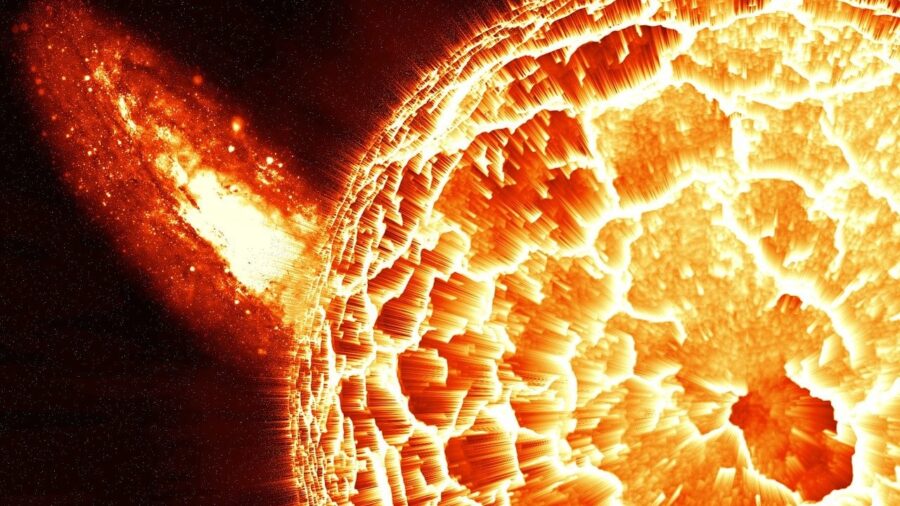
The epicenter of these solar flares is the sunspot region AR 3590, which is currently rotating towards the center of the Sun’s disk. Scientists warn that this region may unleash more Earth-directed eruptions as it evolves.
While the initial two flares were accompanied by a Coronal Mass Ejection, the status of the third and largest flare’s association with a CME remains uncertain for now.
The current surge in solar flares aligns with the Sun’s natural cycles of increased activity, which occurs approximately every 11 years. As the Sun approaches the solar maximum, a period characterized by heightened magnetic activity, sunspots, flares, and CMEs become more frequent.
Unique Characteristics
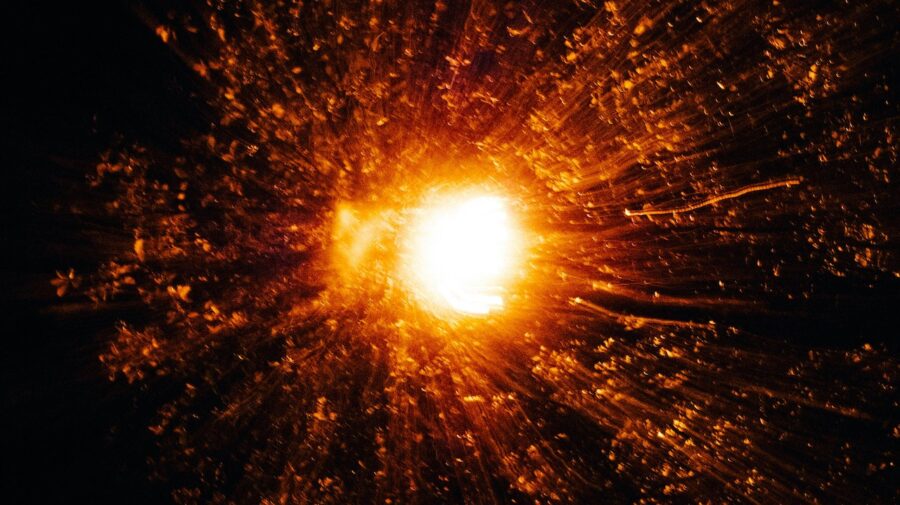
Currently believed to be on the cusp of solar maximum, scientists predict a decline in solar activity in the coming months.
Each solar cycle has unique characteristics, making behavior predictions challenging. The Sun is currently in the middle of its 25th solar cycle since scientists started keeping track.
Contrary to expectations based on the calm and subdued nature of solar cycle 24, number 25 has defied initial projections, proving to be far more intense than expected.
Challenge For NASA

The X6.3 solar flare posed a challenge even for NASA’s Solar Dynamics Observatory. While this doesn’t spell doom for Earth and its inhabitants, it does suggest a need to reassess our understanding of solar dynamics.
Sunspot region AR 3590 remains a source of interest as its magnetic complexity hints at a high probability of magnetic field lines reconnecting.
Therefore, it is plausible that we haven’t witnessed the end of AR 3590’s intriguing activities. There’s a possibility that we might experience a mild Coronal Mass Ejection (CME), releasing sufficient solar particles to cascade into Earth’s ionosphere.
Rapid Release Of Energy
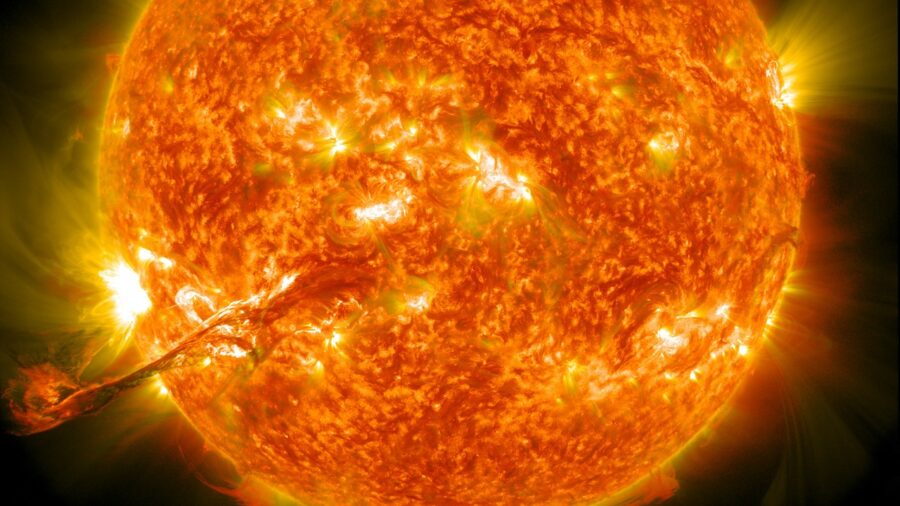
Solar flares are caused by the rapid release of stored magnetic energy in the Sun’s atmosphere. This process occurs when magnetic fields become intensely tangled and stressed like a rubber band stretched beyond its limit and then snapping back. Until 2024, the strongest solar flare experienced was an X5 event on New Year’s Eve in 2023.
Continued Study

Before this, the previous record holder was an X8.2 solar flare on September 6, 2017. Both these flares were part of increased solar activity during their respective years.
Despite our growing knowledge of solar flares, researchers continue to study the precise mechanisms underlying their formation and the factors controlling their frequency and magnitude.











